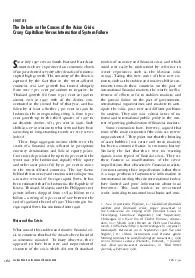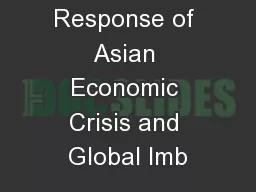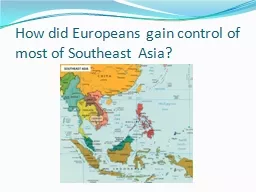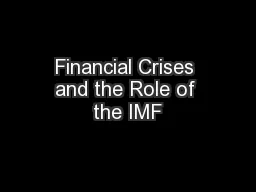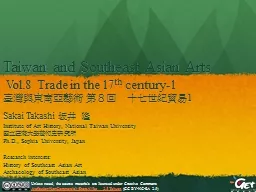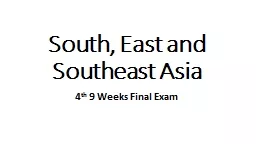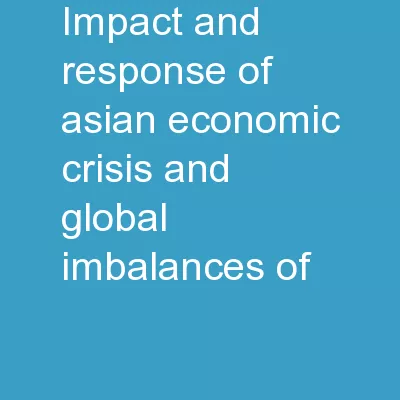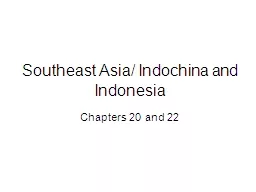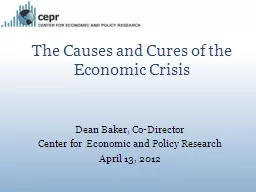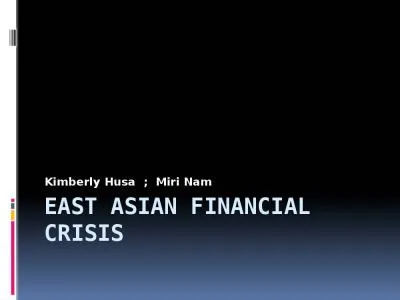PDF-Lee The Debate on the Causes of the Asian Crisis IPG ince July several SouthEast and
Author : pamella-moone | Published Date : 2015-03-13
The enormity of the shock is captured by the fact that in the worstaffected countries real GDP growth has turned abruptly from over per cent per annum to negative
Presentation Embed Code
Download Presentation
Download Presentation The PPT/PDF document "Lee The Debate on the Causes of the Asia..." is the property of its rightful owner. Permission is granted to download and print the materials on this website for personal, non-commercial use only, and to display it on your personal computer provided you do not modify the materials and that you retain all copyright notices contained in the materials. By downloading content from our website, you accept the terms of this agreement.
Lee The Debate on the Causes of the Asian Crisis IPG ince July several SouthEast and: Transcript
The enormity of the shock is captured by the fact that in the worstaffected countries real GDP growth has turned abruptly from over per cent per annum to negative In Thailand growth fell from per cent in 1996 to almost zero in 1997 with all the dec. They are instead composed of multiple traditions that engage each other in mutual encounters Pluralist civilisations are embedded in a common global context or ecumene an overarching civilisation of modernity Islamicisation is a prime example of a s Emerging Market Economies. Assistant Professor . Dr. . Thanet. . Wattanakul. Faculty of Integrated Social Sciences. Khon. . Kaen. University. Nong. . Khai. Campus. Contents. INTRODUCTION. CAUSES AND CONSEQUENCES OF ASIAN DEBT CRISIS. Arrival of Europeans. Europeans were interested in the spice trade. Portuguese were first to reach Southeast Asia in 1511. Dutch set up trading post in 1596.. Dutch pushed out Portuguese and were the main European traders in Southeast Asia. DECADES “SPRINGING” CARE MANAGEMENT www.DecadesGroup.comEmail: Info@DecadesGroup.comFax: 505.345.2211 Your initial appointment is free. A one time set up fee ($150, $250 for couples) to cov Questions. What factors led to the outbreak of the financial crises in the 1990s?. Did international organizations help or hurt these situations?. Who stands to lose and who stands to benefit from the IMF intervention?. Vol.8 Trade in the 17. th. century-1 . 臺灣與東南亞藝術 第. 8. 回 十七世紀貿易. 1 . Sakai Takashi. . 坂井 隆. Institute of Art History, . National Taiwan University. . 國立臺灣大學. Landforms of Southeast Asia. Annamite Chain. Shan Highlands. Arakan Yoma. Mekong. Chao . Phrya. Red River. Irrawady. Barisan. Pegunungan. Maoke. Archipelagos. Mountain chains and valleys. Shipping Lanes and Strategic Passages in Pacific Asia. 4. th. 9 Weeks Final Exam. The Khmer Empire. Cambodia and Myanmar occupy much of the Khmer Empire. . The Khmer Empire. This building was once the administrative capital of Khmer Empire.. Deforestation. Emerging Market Economies. Assistant Professor . Dr. . Thanet. . Wattanakul. Faculty of Integrated Social Sciences. Khon. . Kaen. University. Nong. . Khai. Campus. Contents. INTRODUCTION. CAUSES AND CONSEQUENCES OF ASIAN DEBT CRISIS. The International Economic Crisis – Causes of the Crisis and Consequences in Terms of Competition Policy 9th of January2013 University of Macau/ Macau-China Jean Monnet Indian Influence in . Southeast Asia: Page 602. Southeast Asia has been inhabited since pre-historic times. The communities in the region evolved to form complex cultures and kingdoms with varying degrees of occupation and influence from . EaD. em Jornalismo (Uninter): . Relato de Experiência . Prof. Dr. Eugênio Vinci de Moraes e Prof. Dr. Guilherme Carvalho. Quando e como . Jornalismo . EaD. – Uninter - Fevereiro de 2017.. Previsto no Plano de Desenvolvimento Institucional (PDI) aprovado pelo CEP em 2015.. Dean Baker, Co-Director. Center for Economic and Policy Research. April 13. , 2012. Key Points on the Economic Crisis . The main cause was the collapse of the $8 trillion housing bubble. The financial crisis was secondary. Kimberly Husa ; Miri Nam. The Asia’s Experiences. East Asian countries were remarkable in developing world until 1997. Rapid growth rate brought them far up development scale ; put several in striking distance.
Download Document
Here is the link to download the presentation.
"Lee The Debate on the Causes of the Asian Crisis IPG ince July several SouthEast and"The content belongs to its owner. You may download and print it for personal use, without modification, and keep all copyright notices. By downloading, you agree to these terms.
Related Documents

